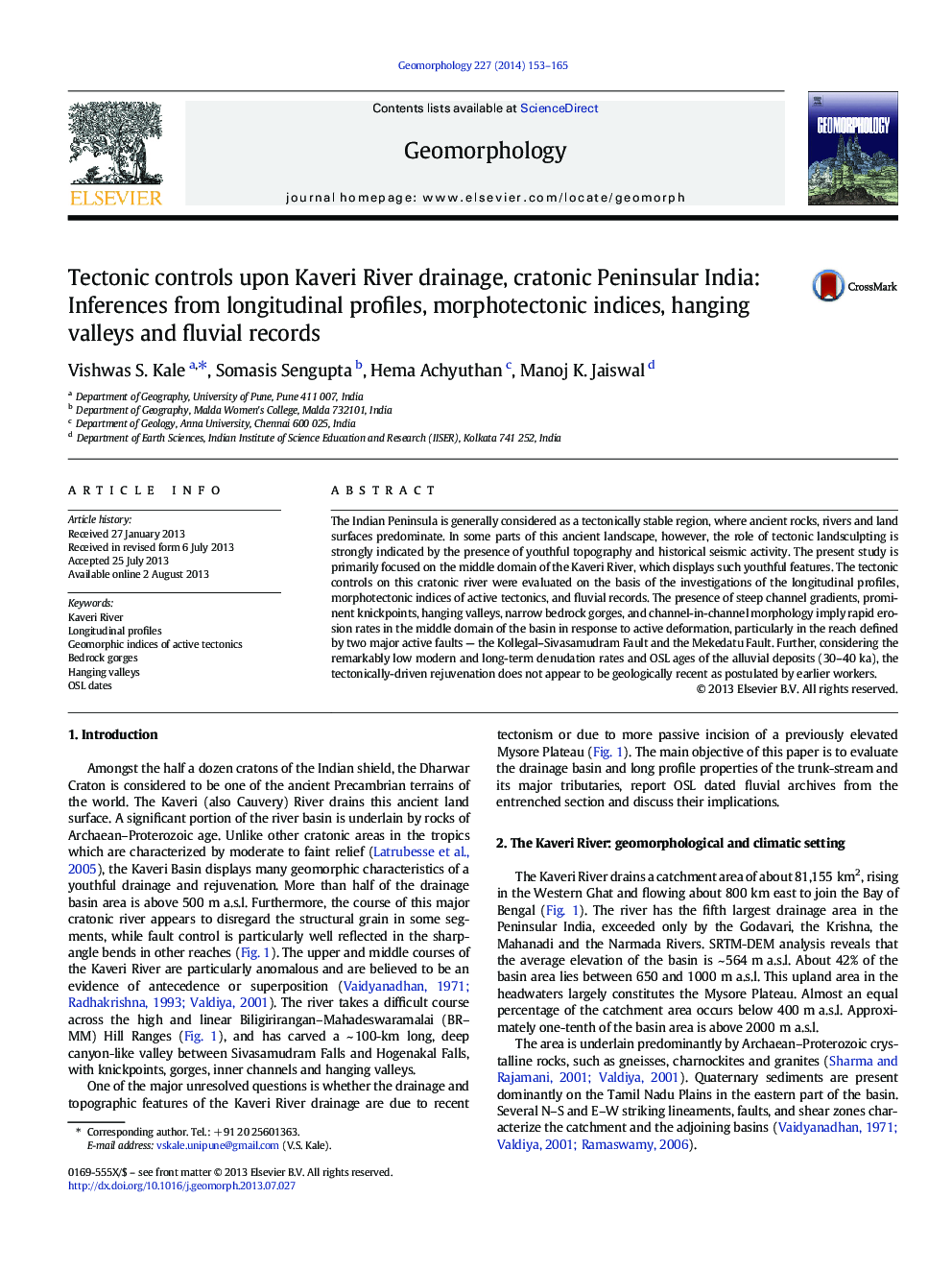| Article ID | Journal | Published Year | Pages | File Type |
|---|---|---|---|---|
| 4684412 | Geomorphology | 2014 | 13 Pages |
•Long profiles and geomorphic indices show differential uplift in mid-Kaveri Basin.•Knickpoints, hanging valleys, and gorges indicate differential erosion and uplift.•Reach with high erosion rates in upper Kaveri Canyon is bound by two active faults.•OSL ages of fluvial deposits suggest depressed erosion rate in lower Kaveri Canyon.•The tectonically-driven rejuvenation does not appear to be geologically recent.
The Indian Peninsula is generally considered as a tectonically stable region, where ancient rocks, rivers and land surfaces predominate. In some parts of this ancient landscape, however, the role of tectonic landsculpting is strongly indicated by the presence of youthful topography and historical seismic activity. The present study is primarily focused on the middle domain of the Kaveri River, which displays such youthful features. The tectonic controls on this cratonic river were evaluated on the basis of the investigations of the longitudinal profiles, morphotectonic indices of active tectonics, and fluvial records. The presence of steep channel gradients, prominent knickpoints, hanging valleys, narrow bedrock gorges, and channel-in-channel morphology imply rapid erosion rates in the middle domain of the basin in response to active deformation, particularly in the reach defined by two major active faults — the Kollegal–Sivasamudram Fault and the Mekedatu Fault. Further, considering the remarkably low modern and long-term denudation rates and OSL ages of the alluvial deposits (30–40 ka), the tectonically-driven rejuvenation does not appear to be geologically recent as postulated by earlier workers.
